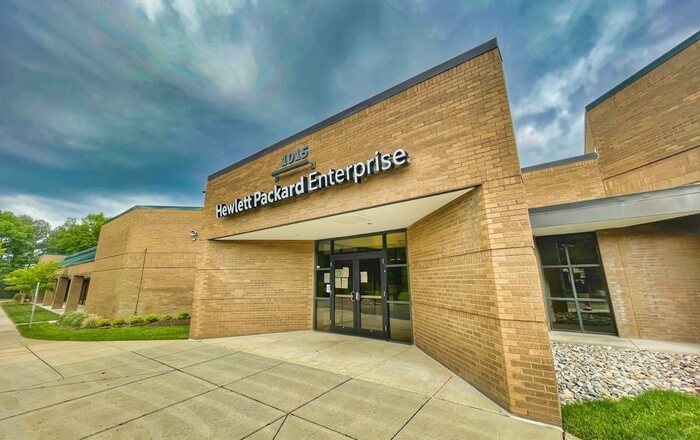In a strategic move to cater to the rising demands of AI workloads, Hewlett Packard Enterprise (HPE) has expanded its Cray supercomputing lineup. The new additions include high-performance blades, storage, interconnects, and management software tailored to support the growing computational needs of AI and traditional high-performance computing (HPC). As AI models continue to grow in complexity, these advancements are positioning HPE as a leader in integrating AI and simulation workloads on a unified infrastructure, a significant departure from traditional siloed approaches.
Addressing the Rising Demands of AI and HPC
HPE’s new Cray Supercomputing GX5000 platform and K3000 storage system are designed to deliver higher compute density, improved energy efficiency, and greater operational control. These systems are built with the recognition that organizations today are not just focused on achieving peak performance on benchmark workloads. They are also under immense pressure to manage power consumption, ensure data security in multi-tenant environments, and integrate AI with existing simulation workflows seamlessly.
European research centers have already begun to adopt these innovations. The High-Performance Computing Center Stuttgart (HLRS) and the Leibniz Supercomputing Centre (LRZ) are integrating the HPE Cray GX5000 into their next-generation systems, Herder and Blue Lion, respectively. These centers are prioritizing sustainability alongside performance, with LRZ planning to implement direct liquid cooling and utilize waste heat recovery in their new systems.
Directly Liquid-Cooled Compute Blades
At the heart of this expansion are three new directly liquid-cooled compute blades designed to cater to various AI and HPC workloads. These blades are optimized for NVIDIA and AMD components, offering flexibility for organizations to choose the right setup based on their needs.
- The HPE Cray GX440n Accelerated Blade is optimized for NVIDIA-based platforms and targets mixed-precision AI and HPC tasks. This blade can house up to 192 NVIDIA Rubin GPUs in a single GX5000 compute rack.
- For AMD enthusiasts, the GX350a Accelerated Blade combines AMD EPYC ‘Venice’ CPUs with AMD Instinct MI430X GPUs, providing an ideal solution for sovereign AI and HPC workloads.
- The GX250 Compute Blade caters to CPU-only workloads that require high double-precision performance, ideal for large-scale simulations and numerical modeling.
All blades rely on 100% direct liquid cooling, a key feature to efficiently manage the rising power densities and thermal outputs of modern AI and HPC systems. Liquid cooling removes heat directly at the component level, improving rack density and sustained performance while reducing the reliance on traditional air cooling.
The Cray Supercomputing Management Software: Streamlining Operations
HPE’s new Supercomputing Management Software is designed to manage the increasingly complex systems that AI and HPC workloads require. The software supports multi-tenant environments, virtualization, and containerization, enabling operators to host multiple workloads on the same infrastructure while maintaining isolation. Energy management features allow operators to track power consumption, estimate usage, and integrate with power-aware schedulers—a vital tool as sustainability concerns continue to grow.
The Slingshot 400 interconnect will be introduced to GX5000-based systems in early 2027, further optimizing interconnect performance for AI workloads. With speeds of up to 400 Gbps, the interconnect reduces latency while maintaining cost control in dense AI configurations.
The Role of Storage in Supercomputing
Storage continues to be a critical part of HPE’s expanded Cray platform. The HPE Cray Supercomputing Storage System K3000 integrates DAOS (Distributed Asynchronous Object Storage), a low-latency, high-throughput solution optimized for AI training pipelines and data-intensive simulations. This storage system offers customizable configurations, with the flexibility to scale for performance or capacity needs.
The K3000 system supports multiple connectivity options, including Slingshot 200, 400 Gbps Ethernet, and InfiniBand NDR, making it compatible with a wide variety of network fabrics.
Portfolio of HPE Services for Supercomputing
HPE continues to provide an extensive portfolio of services around its Cray lineup, offering turnkey deployment, application performance tuning, and 24/7 operational support. These services ensure that organizations can maximize the potential of their supercomputing investments and maintain high performance as workloads evolve.
HPE’s partnership with AMD and NVIDIA also highlights the convergence of AI and HPC, where AMD EPYC CPUs and Instinct GPUs work seamlessly with HPE’s next-gen supercomputing hardware to deliver scalable and energy-efficient systems for both scientific and AI workloads.
Availability and Roadmap
The new GX440n, GX350a, and GX250 blades, along with the Supercomputing Management Software and Slingshot 400 interconnect, are expected to be available in early 2027. The K3000 DAOS-based storage systems will be available in 2026, aligning with the next cycle of large-scale AI and exascale-class procurements.
This timeline ensures that HPE’s Cray platform is ready for the growing demand for AI, data analytics, and AI training at scale, positioning the company at the forefront of the next phase in supercomputing architecture.
Conclusion: Future-Proofing AI and HPC with HPE Cray
HPE’s latest expansion of the Cray supercomputing lineup reflects the increasing convergence of AI, HPC, and data analytics. With direct liquid cooling, modular blade designs, and power-efficient storage systems, HPE is preparing organizations to handle the next generation of AI models and scientific simulations. As AI workloads become more dense and complex, HPE’s Cray supercomputing platform offers a flexible, sustainable, and high-performance solution that meets the growing needs of the industry.

